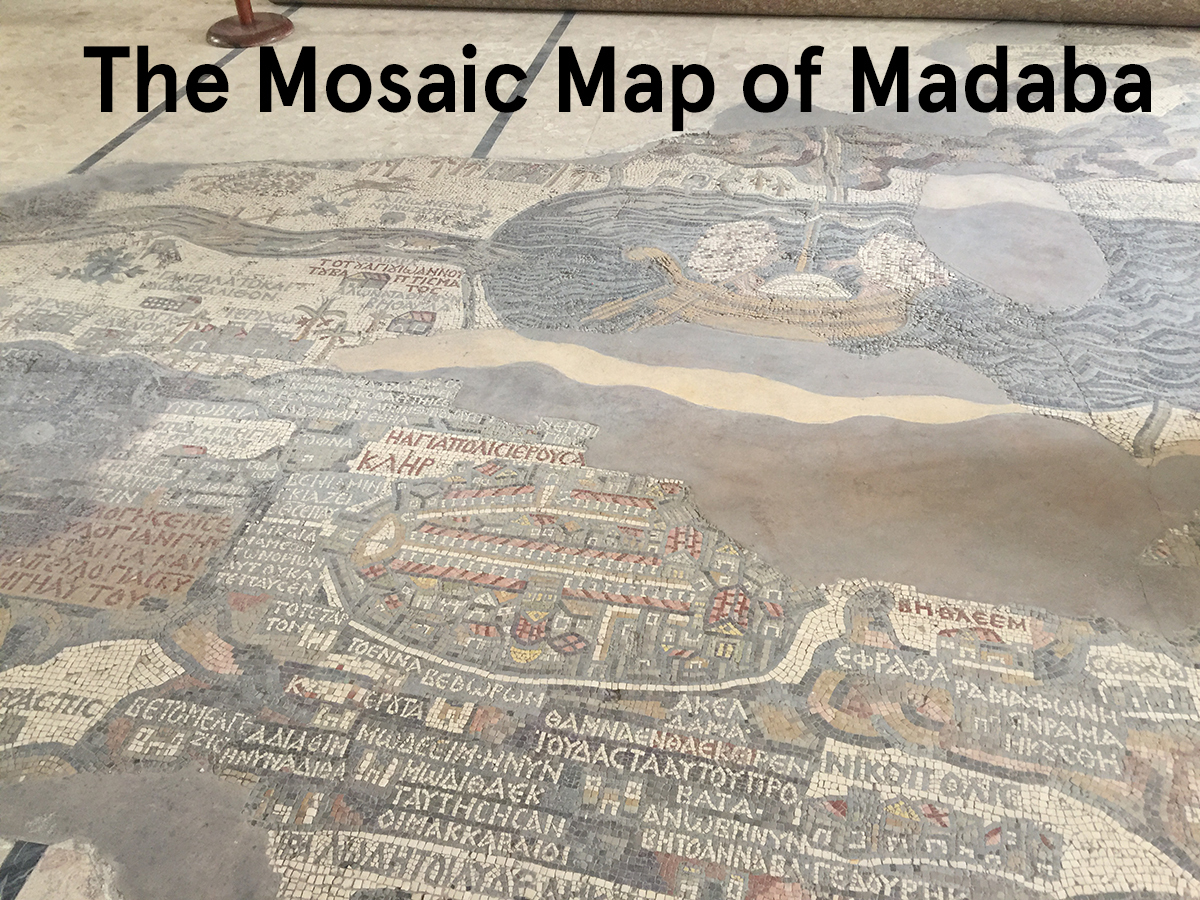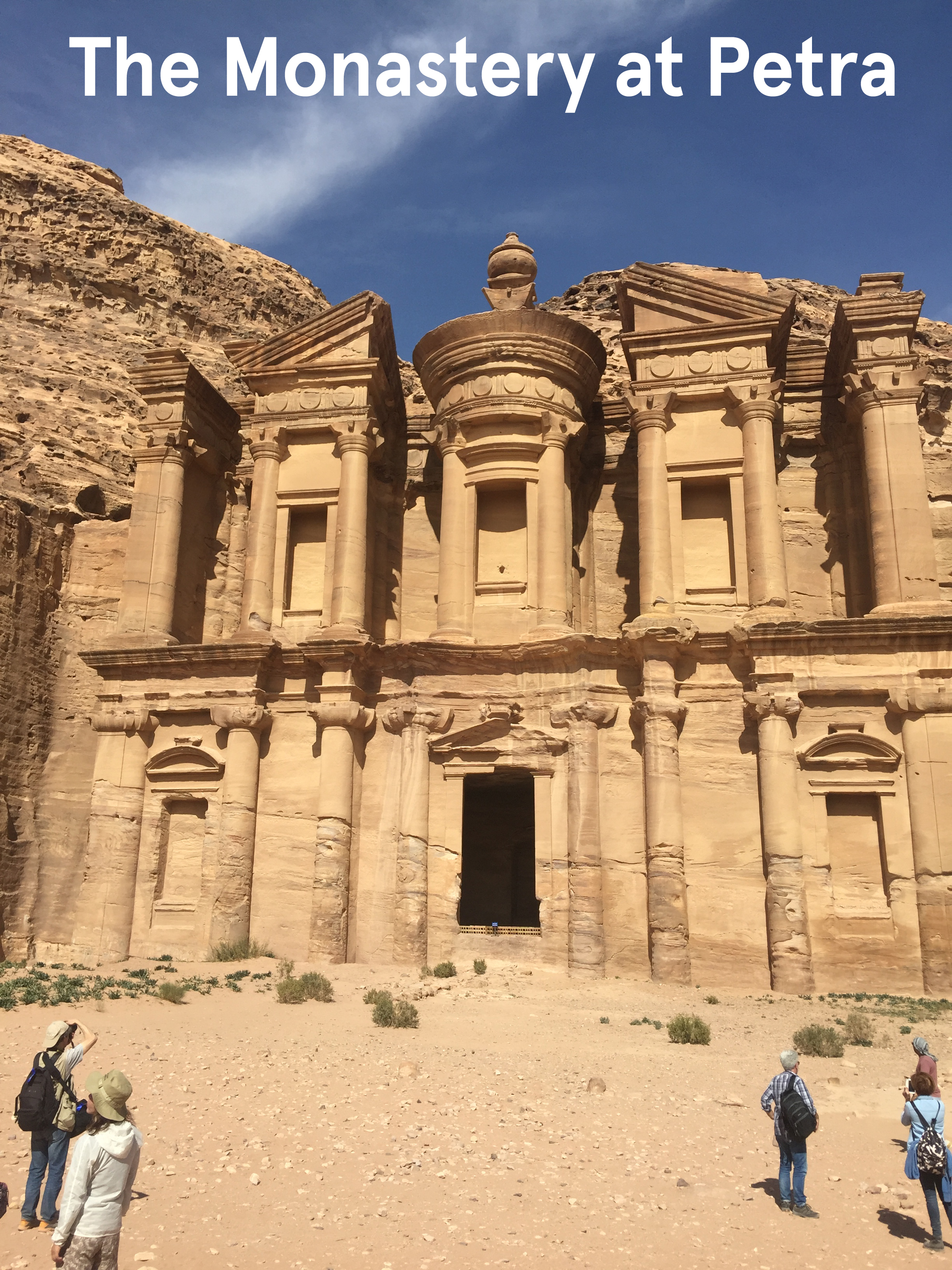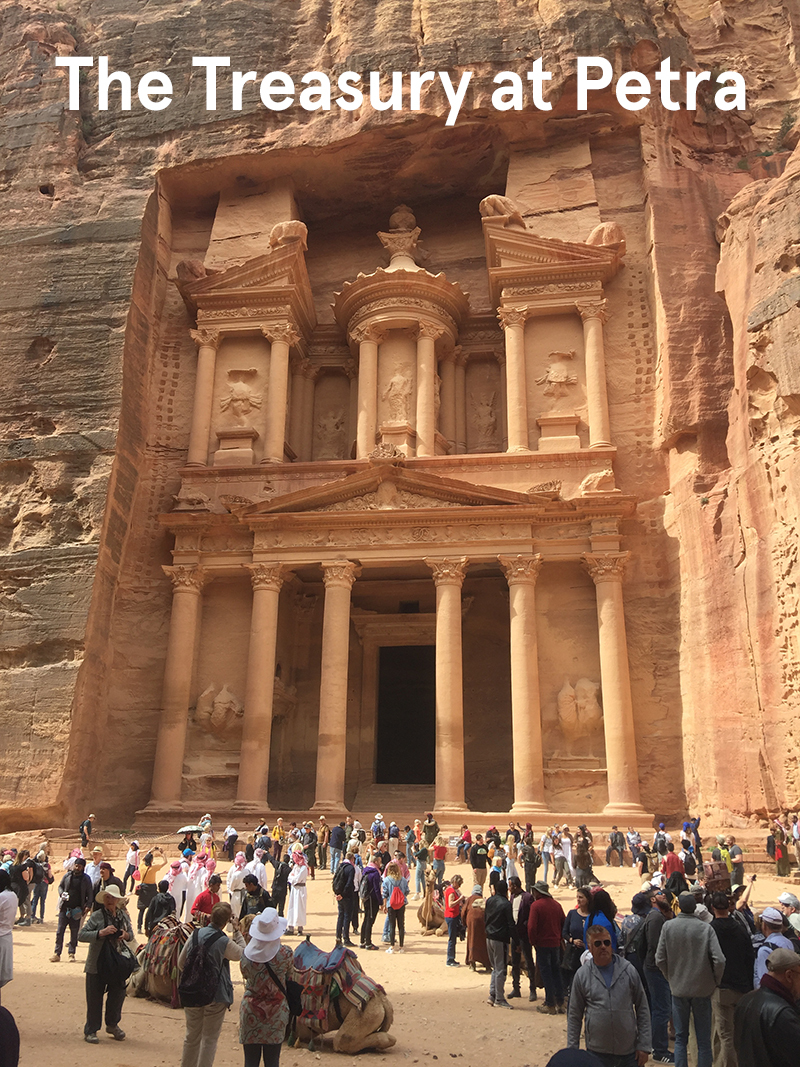Pastor's Blog: Holy Land Update 5 | On This Rock
|
Doug Dortch • Update 5 • Holy Land Trip “On This Rock”
One thing you see virtually everywhere you go in the Holy Land are the ruins of an old church. The vast majority of these churches date back to the Byzantine period in the fifth and sixth centuries when the Roman emperor Constantine converted to Christianity and Christian churches, no longer scorned and persecuted, began to be constructed everywhere. In virtually all of these churches there is some type of mosaic design on the church floor that displayed the Gospel in some artistic way. Archeologists have uncovered portions of many of these mosaics and they reveal an era when Christianity ruled the world. The most impressive mosaic piece in this region is the famous Mosaic Map in the St. George Church in Madaba, which contains the oldest surviving cartological description of the Holy Land.
I didn’t remember any churches in my past visits to Petra, the famed rock city build by the Nabateans in the first centuries BC and AD. Petra is an amazing site, inhabited as early as 9,000 BC by ancient Arab peoples. Referred to as Sela in the Bible (Judges 1:36; 2 Kings 14:7; Isaiah 16:1; 42:11), Petra was in the area inhabited by the Amorites and Edomites in the Old Testament. But in recent years archeologists have uncovered an impressive mosaic in what is now called “the Petra Church,” a mosaic which depicts scenes from creation representing God’s handiwork in all the earth. Visitors to Petra, however, have to move off the beaten path a bit to access the mosaic floor of the church, so most of their attention stays riveted on the impressive monuments of the Nabateans that are everywhere.
You won’t find any mention of the Nabateans in the Bible, either Old or New Testament. The Nabateans were a nomadic tribe that roamed the Arabian Desert, looking for water and pasture for their flocks. They were master farmers and herdsmen, contouring the rocky land to grow crops and provide for their livestock. But it was their ability to carve breathtaking monuments into the sandstone cliffs of Petra that has made the place the wonder that it is today.
For example, everyone who knows anything about Petra is familiar with its most famous monument, “The Treasury.” Most likely constructed in the first century BC, the façade front resembles a storehouse for riches but was most certainly not used for that purpose, which no doubt disappointed many of the Bedouins who later occupied Petra after it was abandoned by the Crusaders in the late twelfth century AD, and upon believing the urn on the top of the carving contained some lost treasure, shot holes at the urn in an attempt to release its riches. More than likely, the Treasury was used as a burial site for one of the Nabatean kings, especially in light of how excavations in recent years have revealed evidence as to that function.
Other such Nabatean burial places abound in Petra, each impressive in its own right. But the one many visitors to the city don’t always get to see is Al Deir, better known as “The Monastery,” because of the 900-step climb that is required to reach it. For those who have the stamina to make it to the top of the mountain upon which is situated, they are greeted with another façade that appears to have some type of religious significance. The word “monastery” comes from a Greek word that means “to live alone,” which is why we normally associate such places with religious hermits who leave society to devote themselves to a more prayerful and ascetic life But alas, this apparently religious structure is also a burial place for a most important person in the community. The fact of the matter is that all of the incredible structures that people come by the thousands to see in Petra are nothing more than burial spots. The whole place is for all intents and purposes a cemetery.
Sadly, I’ve known some churches that fit such a description. They may look like repositories of great resources; after all, ever notice how many First Baptist Churches look like First National Banks? They may give the appearance of being places occupied by people with deep spiritual devotion. But too many times those churches are dead as a doornail.
If we wish to be a church that is true to our convictions and confessions, there is no better place to look in Scripture than in Matthew 16. There, Jesus has journeyed with his disciples way up into Caesarea Philippi, a place marked in Jesus’ day with shrines and altars and monuments to pagan gods. The whole scene provoked Jesus to ask his disciples what people were saying about him. When the disciples began mentioning John the Baptist, Elijah, Jeremiah, or one of the other prophets, Jesus asked them to state their opinion. It was Simon who spoke up first. “You are the Christ, the Son of the Living God.” Simon’s answer pleased Jesus so much because of how he had been open to God’s revelation of that truth that Jesus said to him in response: “Blessed are you, Simon, son of Jonah. And I tell you that you are Peter (which means “rock”), and on this petros (rock) I will build my church, and the gates of Hades will not overcome it (Matthew 16:17-18). Peter’s confession of Jesus forms the foundation of every faithful church so that regardless of what that fellowship might look like on the outside, it’s what’s on the inside that finds favor with God and with man.
The churches at both Madaba and Petra were no doubt built well, but early earthquakes ultimately became their undoing. If we build our church at MBBC on our faithfulness to Jesus, there will be nothing that can tear us down, not even the gates of Hades itself, and we’ll be around to do life-changing ministry until Jesus comes to take his church home.



